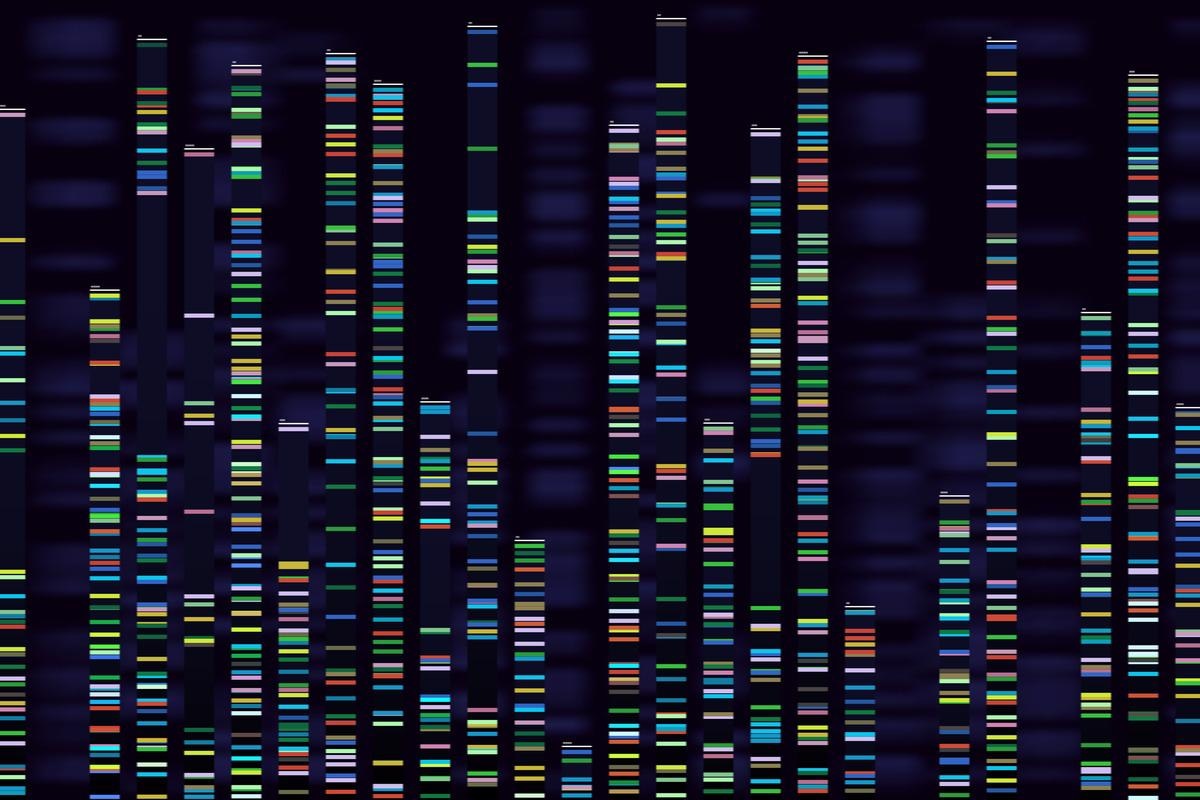In a recent study posted to the medRxiv* preprint server, researchers performed genomic sequencing of severe acute respiratory syndrome coronavirus 2 (SARS-CoV-2)-infected samples. They aimed to identify the dominant variant, assess the mutation profile, and determine the sample-to-sequence turnover time.
 Study: Rapid genome surveillance of SARS-CoV-2 and study of risk factors using shipping container laboratories and portable DNA sequencing technology. Image Credit: Tartila/Shutterstock
Study: Rapid genome surveillance of SARS-CoV-2 and study of risk factors using shipping container laboratories and portable DNA sequencing technology. Image Credit: Tartila/Shutterstock

 *Important notice: medRxiv publishes preliminary scientific reports that are not peer-reviewed and, therefore, should not be regarded as conclusive, guide clinical practice/health-related behavior, or treated as established information.
*Important notice: medRxiv publishes preliminary scientific reports that are not peer-reviewed and, therefore, should not be regarded as conclusive, guide clinical practice/health-related behavior, or treated as established information.
In addition, they determined the risk factors associated with coronavirus disease of 2019 (COVID-19) mortality in residents of Bailiwick of Jersey, a United Kingdom (UK) island.
SARS-CoV-2 belongs to the B-betacoronavirus family (B-βCoV) of viruses. The virus contains single-stranded ribonucleic acid (RNA) along with proteins such as the spike (S), nucleocapsid (N), membrane (M), and envelope (E). Mutations in the amino acid sequences of these viral proteins give rise to new variants of concern (VOCs). The rapid emergence of novel variants has made it difficult to control the spread of COVID-19. An understanding of the genetic aspects would enable the formulation of improved vaccines and therapeutic strategies to combat COVID-19.
About the study
In the present study, the researchers assessed the viral genome of COVID-19 patients and performed an epidemiological analysis to identify the risk factors associated with COVID-19 mortality.
Primary data of 8,950 COVID-19 cases diagnosed by reverse-transcription-polymerase chain reaction (RT-PCR) between September 2020 to August 2021 were obtained by the Government of Jersey (GoJ) as part of a health surveillance program. Secondary data was obtained from COVID-19 patients between June 2021 and July 2021, comprising the vaccination status, symptoms, and travel history of all arrival passengers aged 11 years and above. Information on island residents who sought RT-PCR in case of positive symptoms or direct contact with COVID-19 patients was also obtained.
Oral-nasopharyngeal swabs were collected from 154 patients and subjected to genetic sequencing at the GoJ OpenCell laboratory. In addition, 426 genetic sequences were secondarily obtained from a pathological laboratory. The samples were subjected to RT-PCR to synthesize complementary deoxyribonucleic acid (cDNA) and measure viral loads. The genomic sequences were integrated with RT-PCR findings to assess the sample-to-sequence turnaround time. Viral loads of 6,540 samples with cycle threshold (Ct) numbers lower than 30 were analyzed.
Results and discussion
A total of 12 genetic lineages were identified and grouped into the Delta sub-clades 21J and 21I. About 53% of the sequences contained T95I mutations whereas S: S943T and S: A222V mutations were present in 9% and 25% of sequences, respectively. Highly predominant S gene mutations observed were T19R, L452R, F157 R158G D614G, T478K, E156, and P681R. The most prevalent mutations observed in the viral S genome were R158G (99.8%), G142D (99.8%), A222V (18.8%), and T95I(73.9%).
Most of the sequences were of the Delta VOC (B1.617.2 lineage). These findings suggest that the Delta VOC was the dominant variant in Jersey between June 2021 and September 2021. The mutations enhance viral binding with the host angiotensin-converting enzyme 2 (ACE2) receptors leading to increased viral transmission and higher COVID-19 incidence.
The sample-to-sequence turnaround time was approximately 30 hours. Patient registration, swab collection, and diagnostic analysis took about 12 hours, whereas genome sequencing took 18 hours.
Asymptomatic cases were higher in winter among elders whereas symptomatic cases were predominantly observed in younger individuals (mean age 36 years) in summer. Overall, the number of infections and hospitalizations was four times higher in winter. The highest COVID-19 mortality rate was observed in those aged above 80 years (66.3%). However, young individuals remained positive for longer periods. Additionally, the mortality rate was 21% higher in males. Overall, viral titers were higher in males, elders, and unvaccinated individuals.
Notably, males could be more prone to COVID-19 mortality due to the higher expression of ACE2 receptors in men. Also, deaths due to COVID-19 could be higher in patients aged above 80 years due to the decrease in immunity and increase in comorbidities with advancing age. Higher viral RNA titers in elders above 70 years are suggestive of elevated viral RNA in older age. Moreover, the longer period of infection in youngsters could be due to their unvaccinated status, as only senior citizens were vaccinated in the initial vaccine rollout.
Conclusion
The study findings showed that high-coverage viral genomic sequencing could be performed in near real-time with the use of cost-effective and portable Oxford Nanopore Technology (ONT) devices. This provides a great opportunity for policymakers to generate on-site and rapid viral genomic sequences.
However, the diagnostic parameters need to be optimized to shorten the sample-to-sequence turnaround time. Future longitudinal studies and research should focus on COVID-19 samples with Ct values above 30 that compare viral loads of several VOCs.

 *Important notice: medRxiv publishes preliminary scientific reports that are not peer-reviewed and, therefore, should not be regarded as conclusive, guide clinical practice/health-related behavior, or treated as established information.
*Important notice: medRxiv publishes preliminary scientific reports that are not peer-reviewed and, therefore, should not be regarded as conclusive, guide clinical practice/health-related behavior, or treated as established information.